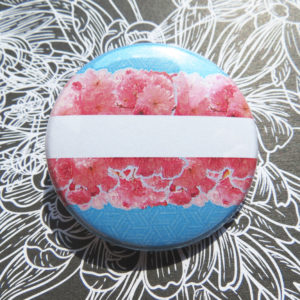Frequently Asked Questions
What is transgender?

Transgender (or “trans”) means that a person’s gender does not match the gender they were assigned at birth.
Example: When Rebecca was born, the doctors identified her as a boy, wrote “male” on her birth certificate and named her Robert. As a teenager, she came out as a woman and changed her name to Rebecca. Rebecca is a woman, but “woman” was not the gender she was assigned at birth.
What is a transgender woman?
A trans woman (or transgender woman) is a woman who was assigned male at birth. This means that when she was born, the doctor smacked her on the bottom, looked at her genitals, and announced, “It’s a boy!” Later in life, she realised she was not, or did not want to be, a boy, and transitioned socially and/or medically to live as a woman.
What is a transgender man?
A trans man (or transgender man) is a man who was assigned female at birth. This means that when he was born, the doctor smacked him on the bottom, looked at his genitals, and announced, “It’s a girl!” Later in life, he realised he was not, or did not want to be, a girl, and transitioned socially and/or medically to live as a man.

What is a nonbinary person?
Traditionally, genders are divided into a binary system of “man” and “woman”. A nonbinary person is neither a man nor a woman, or may be both. They might identify as a third gender or not believe in a system of gender at all.
Other terms which fall under nonbinary include: genderqueer, agender, bigender, third gender, androgyne, pangender.
Is that the same as intersex?
Nope! An intersex person is someone born with a variation in sex characteristics, such as chromosomes, gonads, hormones, or genitals which don’t fit typical male or female bodies. Often an intersex person is assigned either male or female at birth, but may choose another gender later in life. An intersex person can also be transgender, but being intersex does not automatically make you transgender.

Just… no
Is being transgender a sex thing?
No.
How is transgender different from gay?
Gay, lesbian, bisexual, and heterosexual are all examples of what we call “sexual orientation”. Sexual orientation is about romantic and/or sexual attraction. For example, Russell is a man who is only attracted to other men, so Russell is gay.
Transgender refers to gender identity. Everyone has a gender identity of some kind. If you consider yourself to be a man or a woman, then this is your gender identity. A transgender person’s gender identity may also be a man or a woman, but that gender differs from the gender they were assigned when they were born. For example: Russell identifies as a man. This is his gender identity.
Sexual orientation and gender identity are separate, but people usually have both.
Example: Russell identifies as a man (gender identity) and as gay (sexual orientation).
Example: Jordan identifies as nonbinary (gender identity) and bisexual (sexual orientation).
What is cisgender?
Cisgender is the opposite of transgender. If you are not transgender, you are cisgender. In Latin,”trans” means “across” or beyond”, implying someone’s gender has gone beyond that given to them when they were born. “Cis” means “this side of”, implying that the gender of the person has stayed on this side of the gender spectrum since they were assigned their gender when they were born.
Example: When Harry was born, the doctor smacked him on the bottom, looked at his genitals, and said, “It’s a boy!” Ever since then, he has identified as a boy or a man. Today Harry is still are very comfortable being a man. This has never changed. Harry is cisgender.
What are pronouns?
Pronouns are words such as he/him or she/her. You use them everyday. If you are a woman, people probably use “she” and “her” to refer to you. If someone were to use the pronouns “he” and “him” to talk about you, it might be upsetting or disrespectful, or even just confusing. Transgender people often change their pronouns when they come out.
Example: Jennifer used to be Jim, and people would talk about her with “he” and “him” pronouns. Since coming out, Jennifer now identifies with “she” and “her” pronouns. Sometimes her mum accidentally uses the wrong pronouns for her (he/him), but apologises and then uses the right ones (she/her). However, some people will call Jennifer “he” or “him” on purpose to upset her. This is transphobic harrassment.
What about “they/them” pronouns?
Some people, often nonbinary, will choose neutral pronouns. The most common neutral pronouns in English are “they” and “them”. These are commonly used in plural (for multiple people), but have been used in singular (for one person) for at least 600 years, since the 14th century.
Example: They went shopping with their friend.
The second most common neutral pronouns are more recent inventions: “ze” and “hir”. “Ze” takes the place of “he” or “she”, and “hir” takes the place of “his” or “her”.
Example: Ze went shopping with hir friend.
Does a person need to take hormones and have surgery to become transgender?

Certainly not! As stated above, transgender simply means that your gender doesn’t match the one you were assigned at your birth. A transgender person might choose to take hormone replacement therapy and/or to undergo various surgeries to feel more comfortable with their body, but it does not make a person more or less transgender.
Example: Dave was assigned female at birth, but now publicly identifies as a transgender man. Dave will start hormones next year, but has decided not to opt for any surgeries. Dave is still transgender, no matter what the future holds.
So what’s the difference between transgender, drag queens, and transvestites?
A drag queen (or drag king) is a performer. Their performance usually involves a play on or parody of gender.
Example: Michael is a drag queen. He is a man, who dresses up in women’s clothing to play a character on stage for fun, but when he goes home, he is still a man.
A transvestite is a person whose clothing crosses the gender line, while the person doesn’t.
Example: Hugo is a transvestite. He is a man who wears women’s clothing because he enjoys it. He does not identify as a woman or live as a woman, he is simply a man in clothing designed for women.
 How do I ask a transgender person if they have a penis or a vagina?
How do I ask a transgender person if they have a penis or a vagina?
To varying degrees, our bodies are private. If we don’t want someone to see or talk about our genitals, that is our choice, and none of anyone else’s business. How would you feel if someone you know asked you for details about your genitals? It seems like something a small child would ask, doesn’t it? Or a very creepy adult who is about to get arrested. If your transgender friend wants to tell you about or show you their genitals, they will let you know. Otherwise, be polite, and treat them as you would anyone else.
